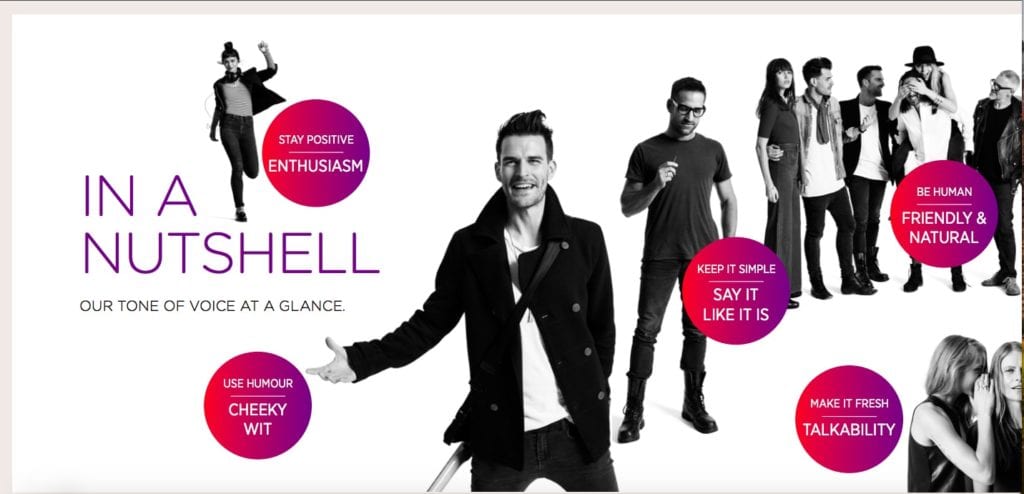

Why are good email subject lines important?
If you’ve been around email marketing for more than ten minutes, you know that an email subject line can make or break your email.
In fact, a quick glance at your own inbox probably offers plenty of ideas for writing email subject lines.
How many do you have in your inbox? 50? 12,456?
No matter how cluttered (or clean) your inbox is, there is likely to be a subject line or two that leaps out at you.
Maybe it’s a timely response to a project or a flight confirmation. Either of which could have important information for you. A project response can be the next piece of information you need to complete something.
A flight confirmation gives you the details of airline number, day, and time that you need for travel.
The whole point of email subject lines is to grab your reader’s attention.


Yet, there’s a process to writing email subject lines that get read.
That process starts with the purpose behind the email.
Your subject line should have a clear purpose
Here’s legendary adman, David Ogilvy, on the matter.
“When I write an advertisement, I don’t want you to tell me that you find it ‘creative.’ I want you to find it so interesting that you buy the product.” – David Ogilvy
He gets right to the point, just like a good email subject line.
The purpose of email marketing is to build trust, credibility, and contribute to the bottom line.
Yet, they don’t have to do all of those things in every email. Some emails are confirmations like receiving your flight information. Others are meant to help you learn something, and others are intended to sell.
And when the email subject line tells me what’s inside, that’s helpful.
Like any piece of copy, there’s a proven formula for writing good email subject lines.
And, it starts with your reader.
We’ll get into that in a moment, but first, let’s look at four components of email subject line best practices.
The 4 Components of Writing an Attention-Grabbing Email Subject Line


Imagine opening your inbox and scanning your emails. Would you open something with an email subject line titled “October Newsletter?” Probably not.
On the other hand, if you were thinking about a weekend getaway and received an email with the subject line “$49 fares this weekend.” Then you’ll probably be at least curious.
With that in mind, most good email marketing subject lines include at least 3 of these four elements.
- Urgent
- Focused
- Intriguing
- Results-Oriented
Consider the “$49 fares this weekend” headline. If you were interested in a low-cost airfare, you’d probably click that just to have a look. You’d want to see where you could go and what types of deals are available. This subject line has all four elements. It’s urgent, focused, intriguing, and results-oriented.
However, if I’d earmarked my vacation money for home improvement projects instead, then I probably wouldn’t be interested and may even unsubscribe.
Urgency used effectively
Here’s another example. This is a successful email subject line from the eyeglass maker Warby Parker. “Uh-oh, your prescription is expiring.” Sent two weeks before the recipient’s eyeglass prescription expires, it’s timely and urgent, which means you’ll likely open it.
Are you seeing a pattern yet? Writing email subject lines is an exercise in your thinking like your recipient.
Let’s jump into some of those email best practices and as you go through these, consider how you can apply the four components of urgent, focused, intriguing, and results-oriented.
7 Email Subject Lines Best Practices
You’ve already seen that writing effective email marketing subject lines starts with your recipient.
1 – Start with Why


Why are you sending this email?
Is it meant to promote a new blog post or is it part of a multi-email marketing campaign to sell a product or service? Or is there another reason?
There are many reasons to send email and its purpose will guide your email subject line and make it relevant.
2 – What Do You Want Your Reader to Think/Feel/Do
A confirmation email meant to serve as a record of a transaction is an entirely different animal than an email that’s part of a sales sequence.
When you know the purpose of the email, you can assess your desired outcome, and that leads to an interesting subject line.
Here’s an example.
Let’s say you’ve planned a multi-email campaign to launch a product. You have an announcement email, 3-5 emails sharing specific benefits of the product, and finally a Last Call email. A popular email subject line formula is to mention that right in the subject line.
Last call: [Name Of Product] closes in [#] hours
So it could be “Last call: Your awesome product closes in 2 hours”
It creates urgency for any fence-sitters. It reminds them that if they’re interested, they need to act now or the product is going away.
But what if your product will still be available next week? How do you handle that email subject line?
Answer a frequently asked question
If you’ve created something in response to a frequently asked question, then you could use that question in your email subject line.
“How can you grow your subscribers this month?”
It answers a popular question and gives a specific time frame which makes it focused.
If you want to onboard new subscribers for your budgeting app, then it’s typical to create a series of emails that help them get the most out of your app. One of those emails might have the subject line of
“How you can save $1500 this year” – You know your subscribers want to save money and they’d benefit from saving it this year.
3 – What are Your Brand Guidelines?


Virgin Mobile Tone of Voice Guidelines
Whether your brand “voice” is edgy, professional, or inspirational, your email marketing should fit with it. It wouldn’t be on-brand to use the Harvard Business Review language for a Gen Z retailer. What words do you associate with your brand?
4 – Keep it Short
Due to space limitations, you have around 60 characters before the email subject line is cut off and about half that on a smartphone. Which means you only have 6-8 words to grab the attention of the reader.
5 – Keep it Focused
Keep your email subject line focused on one thing. Preferably with a clear benefit for reading, “Script for boosting your closing rate by 25%.”
That way, I know I’m getting a sales script meant to boost my sales by 25%. If you’re in sales, don’t you want to improve your closing ratio?
6 – Segment Your Lists
You wouldn’t talk to your best friend the same way you talk to your new boss. Why would you send the same message to your entire email list?
Email marketing works best when prospective customers receive messages targeted toward them and new customers receive emails that help them get the most out of your product/service.
Read more in our detailed segmentation guide.
7 – Write Multiple Subject Lines
Try different tactics until you find one that “fits.” If funny or shocking fits your brand, then try that out. Or, if that doesn’t work, keep it simple and straightforward. “3 Ways You Can Build Strength in 10 Minutes” or if you’re following up, “Here’s the next step.”
To quote Oglivy again, “I never write fewer than 16 headlines for a single ad.”
Ogilvy was talking about print ads but the same thought applies to email subject lines. Its purpose is to capture your reader’s attention and entice them to open it.
Practice makes perfect when it comes to writing email subject lines
As you can see, there’s a lot of thought that goes into writing email subject lines that get read (and opened!). When you apply these principles to the process though, you can make it easier. Keep it focused on what thing at a time and make it something your reader will care about.
You can also A/B test your email subject lines and see which approach gets the best reaction from your audience.
If you’re looking for an email marketing software to design, send, and manage emails, try Sendinblue. Sendinblue offers a free trial which lets you send 300 emails/day.
 Deutsch
Deutsch




















